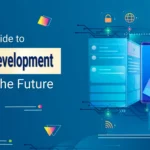
Related Articles

Pen Testing
RSK BSL Tech Team
April 14, 2025
|
|

Pen Testing
RSK BSL Tech Team
April 9, 2025
|
|

Pen Testing
RSK BSL Tech Team
April 7, 2025
|
|

Pen Testing
RSK BSL Tech Team
April 3, 2025
|
|

Pen Testing
RSK BSL Tech Team
March 31, 2025
|
|

Pen Testing
Praveen Joshi
March 27, 2025
|
|

Pen Testing
RSK BSL Tech Team
March 25, 2025
|
|

Pen Testing
RSK BSL Tech Team
March 20, 2025
|
|

Pen Testing
RSK BSL Tech Team
March 18, 2025
|
|

Pen Testing
RSK BSL Tech Team
March 10, 2025
|
|

Software Development
RSK BSL Tech Team
February 24, 2025
|
|

Pen Testing
RSK BSL Tech Team
February 19, 2025
|
|

Software Development
Praveen Joshi
February 11, 2025
|
|

insight
Praveen Joshi
January 31, 2025
|
|

AI Tech Solutions
Praveen Joshi
January 27, 2025
|
|

Software Development
Praveen Joshi
January 20, 2025
|
Scrum, Kanban, and XP: Understanding the Different Approaches to Agile Development
We are living in a fast-paced world where everybody needs an instant solution for everything. The same applies to the software industry. Software development has evolved a lot in the last few decades. This evolution is fueled by the increasing demand for high-end software solutions among industries. Also, the improvement in technology and the advent of new tools and methods have supported the growth of this industry.
The most popular and useful byproduct of this evolution is agile software development. It has revolutionized the way we approach the software development process.
Agile is a lot different from the traditional development workflow that was used earlier. The older conventional methodologies used to follow lengthy plans. These plans included everything from design and specifications to development and final release. You get to see the working piece of software only after the development cycle is complete. If that product was faulty, the whole cycle needs to be repeated. And that was the issue that needed to be fixed. It took a lot of time and resources to go all over the process again to fix the mistakes and flaws in the software product.
The concepts of agile web development and application development are a lot better in this respect. Agile keeps customer satisfaction at the focus point in the software development life cycle. Meeting the initial requirements of the client is the primary goal here.
Let us now explore some of the most popular agile frameworks that help you reach your software development goals…
Different Approaches to Agile Software Development
There are several different approaches to agile development. But the following are some of the most popular agile methodologies…
1. Scrum
Scrum is an agile framework that follows time-bound cycles to break the whole development process into small and easily manageable parts. The key features of Scrum are:
- It breaks down the whole organization into small teams and assigns a fragment of the development project to each team.
- The teams are self-organizing, and they break their task into manageable work items to address one at a time.
- These work items are articulated as time-boxed iterations, also known as sprints.
- All the team members in a Scrum are divided into three categories: The Product Owner, the Scrum Master, and the Development team members.
- The Scrum approach encompasses four different types of meetings: the Sprint Planning Meeting, the Daily Stand Up, the Sprint Review, and the Sprint Retrospective.
Scrum emphasizes the value of continuous improvement. The following are some key terms associated with the Scrum methodology you need to know about:
- Sprint: Time-boxed iterations that last for 1-4 weeks. The duration of the sprint is determined by the teams based on their requirements and capabilities.
- Product Increment: A potentially shippable product is delivered for testing and feedback at the end of each sprint.
- Product Backlog: An organized list of all requirements of the product development set according to the priority levels.
- Sprint Backlog: List of requirements for a particular sprint.
- User Stories: Encapsulates who, what, and why of the requirement from a user perspective.
- Definition of Done: When all the boxes are checked for exit from Sprint level and Release level.
- Daily Standup Meeting: To track the progress of each day and discuss any impediments that are blocking the teams from accomplishing the sprint goal.
2. Kanban
Kanban is basically a workflow management approach for agile software development teams. It can help you keep track of all your work and progress while you move from one stage to the next one. The following are the key features of Kanban:
- It gives you workflow visibility at any point in time.
- Here, the development teams break down the work into small parts and write them on a card. All these cards are then attached to a board to track all activities at the same time.
- There are different columns on the board to mark the stage at which a task is. It states the tasks as ready, in-progress, resolved, ready for review, closed, etc.
- This methodology limits the number of tasks that can be in progress at a single point in time.
- It improves the efficiency of the development cycle by eliminating the waste that corrupts the process.
3. XP
It is a development methodology first introduced through a book named Extreme Programming Explained: Embrace Change by Kent Beck and Martin Fowler. Key features of the methodology are given below:
- It stands for Extreme Programming.
- This is a framework that focuses on the quality of delivered software.
- Has shorter development cycles that allow teams to accommodate frequent changes from the customer.
- In XP, customers are usually on-site with the development team.
- It is a continuously improving approach that is responsive in terms of customer requirement changes.
So, these are the 3 most popular agile software development approaches currently trending in the market. However, there are several other methodologies available to choose from. But these three are the most used by software outsourcing services globally.
Praveen Joshi
Praveen is a seasoned IT Solutions Leader and Director at RSK Business Solutions, a technology-driven IT Consulting Company that specializes in Bespoke Software Development, Agile Consulting, Mobile App Development, Smart Sourcing, and much more. For the last 17 years, he has been delivering quality custom IT solutions that help businesses achieve their goals.

 Share
Share Post
Post Tweet
Tweet Copy
Copy


